
Chapter 5 Viruses
Chapter 5 Viruses

Chapter outline 5.1 General Properties of Viruses 5.2 General Features of Virus Reproduction 5.3 Overview of Bacterial Viruses 5.4 Temperate Bacteriophages:Lysogeny and Lambda 5.5 Overview of Animal Viruses 5.6 Pox Viruses 5.7 Adcnoviruses 5.8 Retroviruses 5.9 Viroids and Prions
5.1 General Properties of Viruses 5.2 General Features of Virus Reproduction 5.3 Overview of Bacterial Viruses 5.4 Temperate Bacteriophages: Lysogeny and Lambda 5.5 Overview of Animal Viruses 5.6 Pox Viruses 5.7 Adcnoviruses 5.8 Retroviruses 5.9 Viroids and Prions Chapter outline
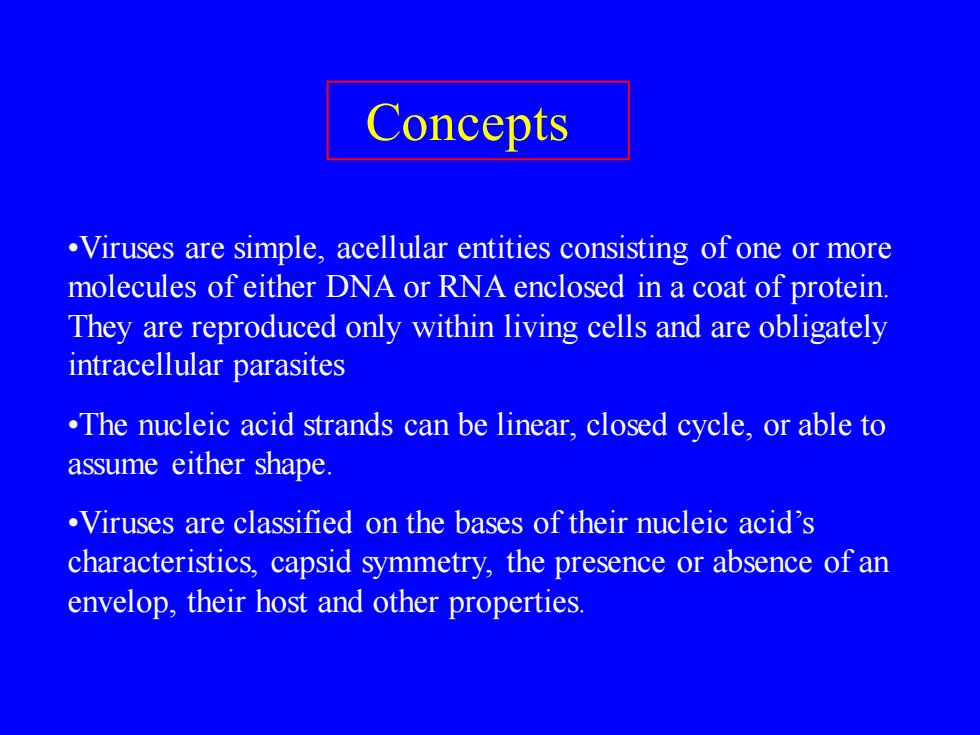
Concepts Viruses are simple,acellular entities consisting of one or more molecules of either DNA or RNA enclosed in a coat of protein. They are reproduced only within living cells and are obligately intracellular parasites .The nucleic acid strands can be linear,closed cycle,or able to assume either shape. .Viruses are classified on the bases of their nucleic acid's characteristics,capsid symmetry,the presence or absence of an envelop,their host and other properties
Concepts •Viruses are simple, acellular entities consisting of one or more molecules of either DNA or RNA enclosed in a coat of protein. They are reproduced only within living cells and are obligately intracellular parasites •The nucleic acid strands can be linear, closed cycle, or able to assume either shape. •Viruses are classified on the bases of their nucleic acid’s characteristics, capsid symmetry, the presence or absence of an envelop, their host and other properties

5.1 General Properties of Viruses Viruses differ from living cells in at least three ways: (1)Their simple,acellular organization (2)The absence of both DNA and RNA in the same virion, (3)Their inability to reproduce independently of cells and carry out cell division as prokaryotes and eukaryotes do
(1) Their simple, acellular organization , (2) The absence of both DNA and RNA in the same virion, (3) Their inability to reproduce independently of cells and carry out cell division as prokaryotes and eukaryotes do. Viruses differ from living cells in at least three ways: 5.1 General Properties of Viruses
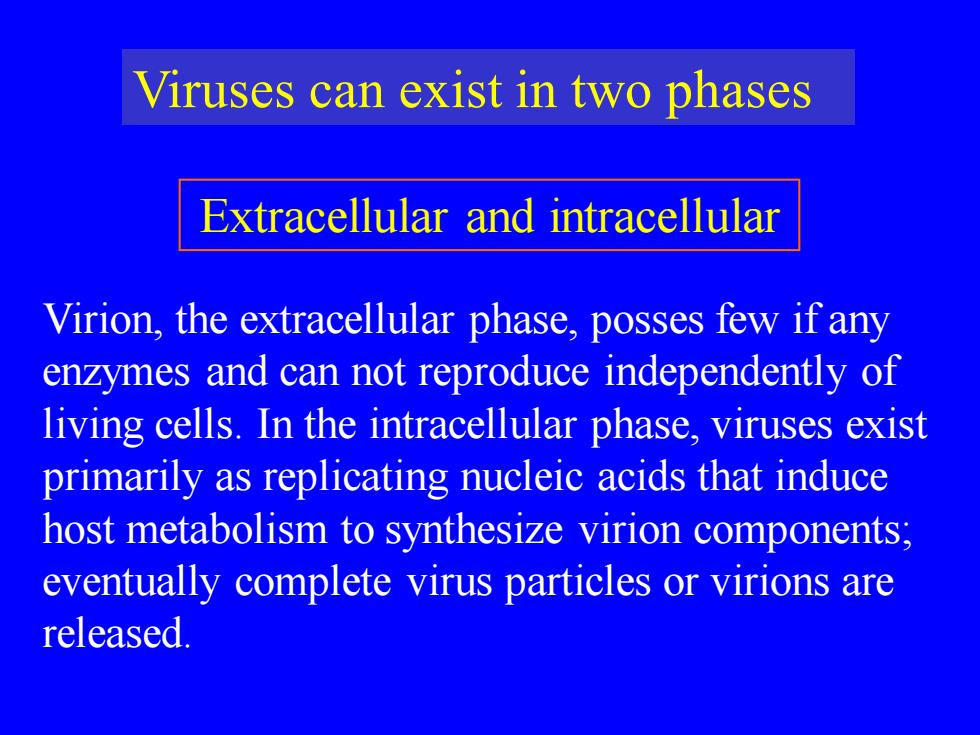
Viruses can exist in two phases Extracellular and intracellular Virion,the extracellular phase,posses few if any enzymes and can not reproduce independently of living cells.In the intracellular phase,viruses exist primarily as replicating nucleic acids that induce host metabolism to synthesize virion components; eventually complete virus particles or virions are released
Virion, the extracellular phase, posses few if any enzymes and can not reproduce independently of living cells. In the intracellular phase, viruses exist primarily as replicating nucleic acids that induce host metabolism to synthesize virion components; eventually complete virus particles or virions are released. Extracellular and intracellular Viruses can exist in two phases
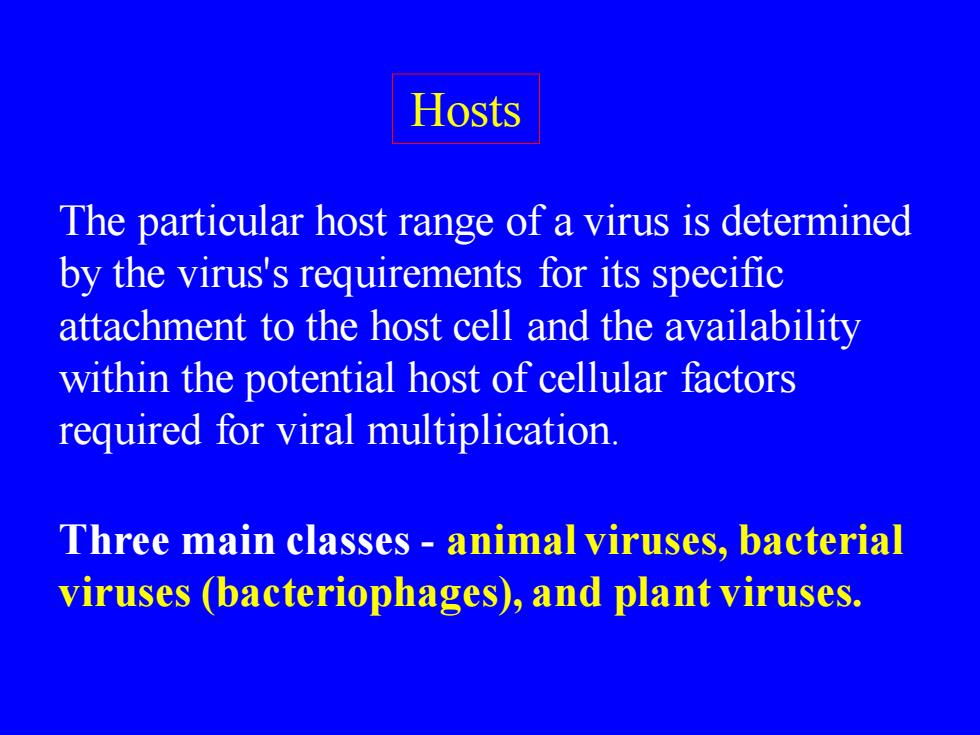
Hosts The particular host range of a virus is determined by the virus's requirements for its specific attachment to the host cell and the availability within the potential host of cellular factors required for viral multiplication. Three main classes animal viruses,bacterial viruses (bacteriophages),and plant viruses
Hosts The particular host range of a virus is determined by the virus's requirements for its specific attachment to the host cell and the availability within the potential host of cellular factors required for viral multiplication. Three main classes - animal viruses, bacterial viruses (bacteriophages), and plant viruses
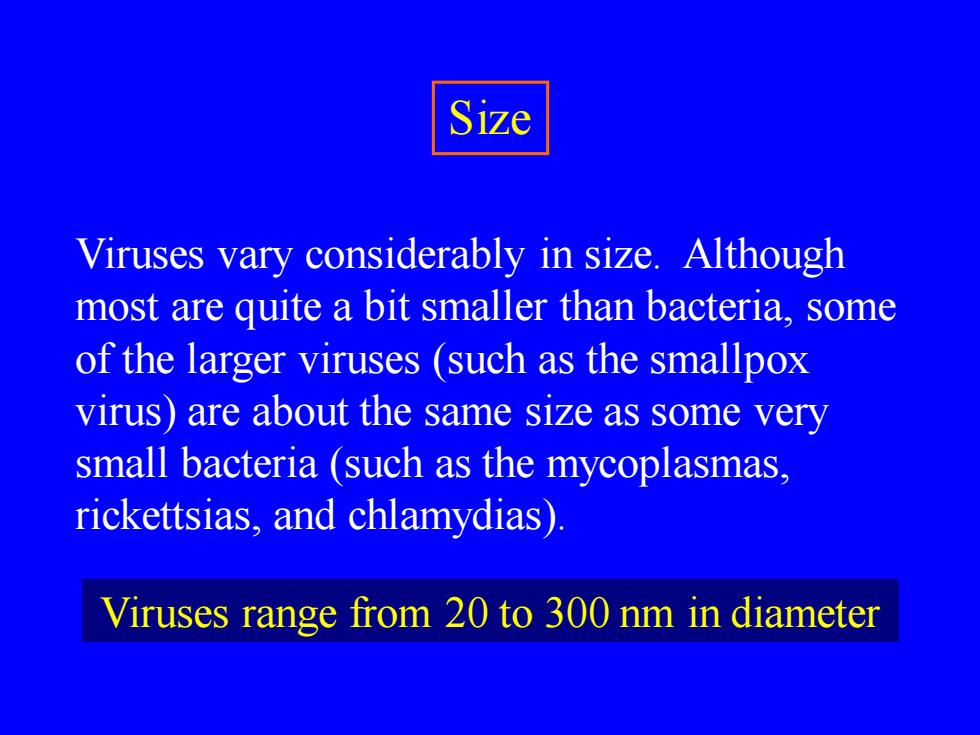
Size Viruses vary considerably in size.Although most are quite a bit smaller than bacteria,some of the larger viruses (such as the smallpox virus)are about the same size as some very small bacteria (such as the mycoplasmas, rickettsias,and chlamydias). Viruses range from 20 to 300 nm in diameter
Viruses vary considerably in size. Although most are quite a bit smaller than bacteria, some of the larger viruses (such as the smallpox virus) are about the same size as some very small bacteria (such as the mycoplasmas, rickettsias, and chlamydias). Size Viruses range from 20 to 300 nm in diameter

The comparative sizes of several viruses and bacteria: 225 ●Ena Adenovir:s 0m×0am ●24nm r (a bacter.em) ●30nm 1 nm 200nm Vacdinia virus 3enm×201m×100nm
The comparative sizes of several viruses and bacteria:
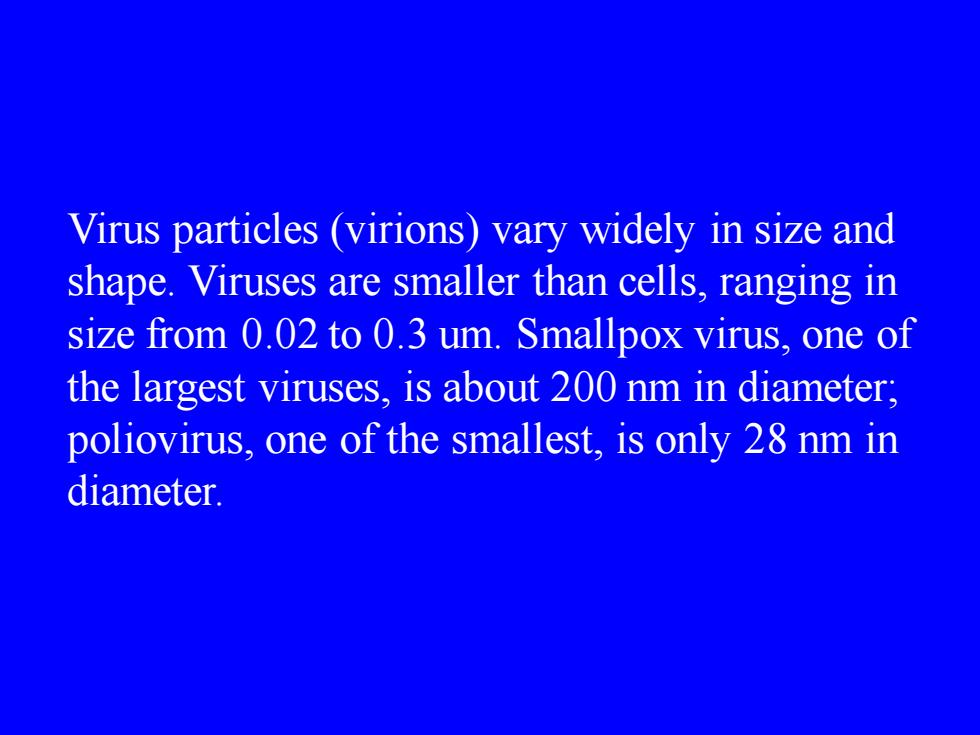
Virus particles (virions)vary widely in size and shape.Viruses are smaller than cells,ranging in size from 0.02 to 0.3 um.Smallpox virus,one of the largest viruses,is about 200 nm in diameter; poliovirus,one of the smallest,is only 28 nm in diameter
Virus particles (virions) vary widely in size and shape. Viruses are smaller than cells, ranging in size from 0.02 to 0.3 um. Smallpox virus, one of the largest viruses, is about 200 nm in diameter; poliovirus, one of the smallest, is only 28 nm in diameter

Genome in virion DNA RNA RNA-DNA viruses viruses viruses SSDNA dsDNA SSRNA dsRNA ssRNA dsDNA (Retroviruses) (Hepadnaviruses)
Genome in virion